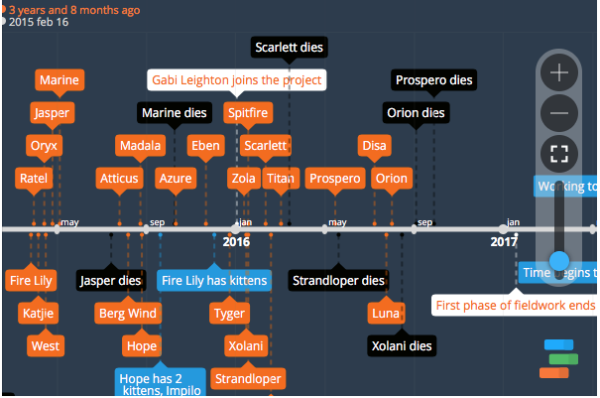A wild caracal was spotted yesterday on a trail in Table Mountain National Park by local wildlife photographer Kyle Kingsley.
While hiking in the mountain Kingsley experienced an up-close encounter with the rare and elusive animal. He took to social media to share a video he had taken of his remarkable experience.
In the video, Kingsley expresses his awe at the sight of the wild cat.
“I just ran into a caracal….how insane,” he says.
Continuing, he points out that the feline has a tag on its ears.
The caption below the video reads, “I got to hang out with it for another 5 minutes without it running away – amazing!”
The wild cat was on its own – caracals are known for their solitary behavior – and continued crossing the path Kingsley was walking on, looking back at him a few times.
A second clip Kingsley captured, which he labelled ‘Caracal sighting on Table Mountain pt. 2,’ illustrates how near he was to the animal.
The Urban Caracal Project, an organisation based in the Western Cape, focuses on the conservation and study of wild caracals. It explains that the creatures are primarily nocturnal but are often spotted during daylight in Table Mountain National Park.
The conservation group is committed to keeping a record of the health, numbers and distribution of the caracal population. Along with this, the project has tagged several caracals in the area in order to monitor them.
Here is the latest population distribution map for caracals in the Cape Peninsula.

Caracals can been seen during daylight hours when there is less human disturbance and spend all of their time on the ground but are able to climb trees and scale giant rocks.
Facts about caracals
1. Although they are found in various parts of Africa, the Middle East and Southwestern Asia, caracals are mostly predominant in the mountainous terrain of the Eastern Cape.
2. Caracals play a pivotal role in balancing the ecosystem as the largest remaining predator in the Western Cape area.
3. Similar to domestic cats, caracals purr when they are content – a loud and echoing sound.
4. Caracals are also referred to as the ‘rooikat’ or ‘lynx’.
5. Caracals possess impressive strength in their hind legs and can leap 3 metres vertically into the air – making it easy for them to capture prey such as birds.
6. Egyptians revered the wild feline; they would portray them in wall paintings and even embalm the bodies of deceased caracals before placing them in tombs.
7. The biggest threat to population numbers is the developing urban landscape, which continues to encroach on habitats of wildlife. Additionally, the creatures are viewed as a ‘threat to livestock’ and are often gunned down in farming communities.
Picture: Pixabay

